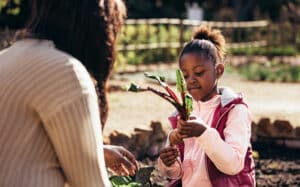 The real Californian and national vision is to generate opportunities throughout the United States for grants and private funding for homelessness and low-income housing and combine these work opportunities with Regenerative Agriculture (RA) and other clean energy sources for the homeless. It is quite clear that the portion of the homeless population that isn’t dealing with the more severe issues of addiction or serious mental illness and a larger percentage of those that are low income are ripe candidates for this kind of community and work opportunity.
The real Californian and national vision is to generate opportunities throughout the United States for grants and private funding for homelessness and low-income housing and combine these work opportunities with Regenerative Agriculture (RA) and other clean energy sources for the homeless. It is quite clear that the portion of the homeless population that isn’t dealing with the more severe issues of addiction or serious mental illness and a larger percentage of those that are low income are ripe candidates for this kind of community and work opportunity.
There is no reason that communities throughout the country that combine RA and low-income modular housing cannot be established. Those that are economically disadvantaged can be housed, receive training, given meaningful work, create a wide variety of healthy vegetables and fruit, and at the same time improve the conditions of the soil to actually pull down carbon from the atmosphere. In addition, RA only uses 1/6th of the amount of water that ordinary agriculture requires. At this time of extreme drought conditions, RA presents opportunities in the San Joaquin valley that have barely started.
The world and the United States are aware of the tremendous food shortages that exist in virtually every country. Currently, there is the choice of creating inexpensive quality housing and training at a price level that can be started with grants or impact investing capital. These can be used to build communities focused on permanent healthy living environments that will in most cases be fully self-sufficient and profitable within three years and then be a source for feeding large-scale populations.
It is no longer too expensive to build the housing or teach the skills necessary for any healthy, motivated person to live in comfortable communities. These communities can generate self-sufficiency and contribute to the world both with food and carbon reduction.
The Global Bridge Foundation and its Efforts
Over the last year and a half (since Oct 2020), The Global Bridge Foundation has been working with The People Concern to care for the homeless. The Global Bridge has been laying the groundwork to find a location in Los Angeles that would allow for a community to be developed that would be large enough to create a regenerative farm, a connected community, and a comprehensive care facility. The People Concern is the largest program in the Los Angeles area for housing the homeless. John Maceri from The People Concern and Robert Strock from The Global Bridge have developed a close friendship that has been inspired by this joint vision to bring affordable housing, (RA), a sense of community to open the door for a new avenue to care for the homeless in large numbers outside of the city.
Both Strock and Maceri agree that creating a community and not having to deal with the problem of NIMBY (Not in my backyard) would be incredibly beneficial. Their shared vision has spurred this project which has since received the support of the Director of County Planning which has enabled them to get the realistic support needed to make it viable.
This has been the foundation’s most inspired and busy period since its inception. This one unique idea has generated several projects that hold the promise to help bring the bottom of the economic strata of our city/county and hopefully a much greater part of our society up. The idea is to create a community full of meaningful job opportunities and generate much-needed healthy food and benefit our planet by reducing carbon through RA.
In the last couple of years at The Global Bridge, we have zeroed in on a need that hasn’t been addressed — a combination of RA and the lower economic strata of our country, especially by the wealthiest countries in the world.
Homelessness and Regenerative Agriculture
Our current digital and connected age has optimized opportunities to move in this sensible humane direction because of the obvious inequities present in the homeless communities that are being shown in the media, simultaneously along with the dangers of global warming. The disparities between the rich and the poor have finally manifested in the streets in such large numbers that it is no longer easy to ignore or suppress. In the bigger cities especially, the very successful people are experiencing both a burden and increased awareness of the suffering at stoplights and freeway exits. In addition, we have all been exposed to the immense threat of global warming through the fires, droughts, hurricanes, and increased famine throughout the world.
No homeless programs can provide housing on county land for ordinary issues within the homeless community like drug or alcohol addiction, mental illness, or other limited capacities. The exception is that agricultural land allows for housing for farmworkers.
It is on this basis that combining farm work and those that are also in lower-income brackets or homeless can get a chance to earn their living in a desirable low-cost community with modular housing.
A combination of factors has allowed The Global Bridge to play a significant role in sponsoring programs that combine both this lower-income and homeless housing. This includes the unique opportunity for jobs that are a wave of the future using RA, with the cooperation of existing Prominent Homeless Programs, Grant funding, and another important global warming-inspired movement called Eco-System Restoration Camps.
Regenerative Agriculture: RA focuses on topsoil regeneration, increasing biodiversity, improving the water cycle, enhancing ecosystem services, supporting carbon sequestration, increasing resilience to climate change, and strengthening the health and vitality of farm soil. Practices include recycling as much farm waste as possible and adding composted material from sources outside the farm.
A broad group of supportive corporate, non-profit, and governmental entities are now available to provide funding for this endeavor like no time in the past.
Homelessness has generally been restricted to the city environments and therefore has had to limit itself largely to just a building without having the benefit of a larger tract of land. This abundant agricultural land allows for a real spaciousness that allows for a community to be developed. At the same time, it creates a desirable environment as it is designed to be a connected neighborhood community.
The Advancement of Regenerative Agriculture and Eco-System Restoration
The first unique timing opportunity is the advanced technology of regenerative agriculture which is already established at a substantial scale worldwide. It is currently part of the Paris Peace Accord and has been since 2016 by the majority of nations. Gabe Brown and his Soil Health Academy have been immensely supportive by guiding us as a foundation to establish the comprehensive conditions necessary for a regenerative farm. Brown also plays a role as the ultimate consultant. Brown and SHA, as of now, consult for 30,000,000 acres of farmland in the United States, converting from traditional farms to RA. He is and has pledged support to be the ultimate supervisor for other experts in our projects outside California as well.
Eco-System Restoration Camps: Ecosystem Restoration Camps is a global movement of people fostering an abundant earth by repairing broken ecosystems. It envisions a fully functional, peaceful, abundant, biologically diverse Earth brought about through cooperative efforts for the ecological restoration of degraded lands.
Eco-System Restoration is currently active on six continents with 50 camps. This work transforms desert land into fertile grounds through a large combination of animal grazing, water redevelopment with dams, streams, irrigation and manpower, and composting (which then sets up the conditions ultimately) for regenerative agriculture to take place.
John Liu, one of the key pioneers in the field, transformed 35,000 sq km of desert into an oasis in ten years in China from 1990-2000. Currently, the Sinai Peninsula is doing the same kind of transformation across 75,000 sq km in a massive undertaking. John is one of the key consultants on this project as well.
These are the two largest projects, but the same work is being done across the world through John Liu’s innovative work in his camps. John has also pledged his support to the Global Bridge Foundation in whatever way he can, directly and indirectly, guiding us toward this kind of development. Both John Liu and Gabe Brown have been guests on The Global Bridge’s podcast called “The Missing Conversation”, available on The Global Bridge’s website and Apple Podcasts.
Increased grant money and funding
The second new opportunity that is currently available through The Global Bridge is newly available grant money on a scale because of the need nationally at a level that has not existed before this time. We have partnered with more than 10 groups that have expertise in low-income housing or homelessness, interfacing with governmental bodies for zoning, planning and other regulatory agencies, contractors for modular housing, regenerative experts, engineers, grant writers, solar foundations whose mission is to serve low-income people to teach them skills to both install solar as well as create solar fields.
The third unique element that has opportune timing is linking up the regenerative agriculture community and the eco-system restoration work with the grants. This has the realistic expectation of expanding enormously as all five of the projects currently moving forward have the very real potential of scaling 100x over a number of years. There are millions of acres available that aren’t currently being used that are near cities that illuminate the realistic potential of this expansion.
Los Angeles county will accommodate the needs of the homeless in our preliminary planning to allow for 144 beds. It consists in its proposal of 48 houses under 1,000 square feet with three homeless individuals in each of these 3 bedroom 2 bath units. In addition, we are allowed to have five other buildings to support a comprehensive program, including other trades, a computers center, a barn for farm animals and equipment, a kitchen and community eating area, a store, and a multipurpose center.
In Los Angeles city, we are funding a grant to expand “Share” (another premiere homeless provider in Los Angeles) housing by either purchasing at less than 1 percent interest rates for buying 10-bedroom, 6-bath duplexes that include programs to deal with a wide variety of opportunities that address the psychological needs of the residents in the housing. We will also tie in regenerative agriculture in a portion of these houses.
The third grant that we have received funding for is an agency that is perhaps the most trusted 501C-3 in Los Angeles. Pastor Ron Hooks serves the beach area of Santa Monica and Venice. He connects homeless individuals and families with either their relatives or placements into the wide range of facilities in Los Angeles. Pastor Ron has just recently expanded the territory to include Venice Beach and the grant funds will assist him to make a comprehensive transition that will include more services. Like the other programs that we have mentioned, he has received grants from credible sources — in this case, ongoing grants from the City of Santa Monica.
The fourth grant is on a 7,000-acre project in the Appalachian mountains called “The Appalachian Renewal.” The project is applying for approximately five grants to create a large housing complex on the acreage to teach a combination of Eco-System Restoration, RA, and Reforestation, including farming medicines that grow in the forest operated by low-income workers.
The fifth program that we are currently funding the multiple grant applications is in Georgia, the poorest county in the country. We are applying for five grants for housing for “White Oak Pastures” where training is done weekly for groups throughout the country on RA. In addition, there will be a follow-up grant that will also provide housing for the approximately 170 workers in that county.
We have at least 10 other organizations we’re in conversation with about new grants for either expanded housing, counseling, RA, ecosystem restoration, food trucks to deliver locally to poor neighborhoods, or simply the expansion of Regenerative agriculture to serve those in need.
An initiative supported by experts and partners
The fourth unique opportunity that allows us to move forward is the breadth of team support from various fields, expertise, and project leaders, as indicated, including RA, Eco-system Restoration, and Red Brick Solutions. In addition, the family of Carol Sevilla and her sisters is allowing the permitting process of the land without requiring an economic commitment until approval is completed for the Los Angeles County project, where we will meet with the multiple county agencies on May 10th, 2022, in what is called a “One Stop Shop”.
The only pioneer that we are aware of that has succeeded in the country to create a rural community that is nearby a city that includes a farm (not regenerative) is in Austin, Texas, called “Community First.” The founder Alan Graham who is also on the “The Missing Conversation Podcast”, has been a great support and guide to our progression in the various projects we have undertaken. In addition, he has a documentary movie that has been shown on PBS called “Community First: A Home for The Homeless.”
Included in our team support is a group of eight key leaders in different fields directed by David Larson and his corporate entity “Red Brick Solutions”, which is giving the foundation reduced-cost support. He is an engineer and coordinator of individuals with precise skills ranging from construction, grant writing, engineering — expediting projects through organizing both interviews with county or city agencies and following guidelines, an expert in Accessory Dwelling Units, and much more. They are currently involved with 40 program developments in the United States.
In the Homeless program area in Los Angeles, John Maceri is the lead director of “The People Concern”, which will coordinate the 125-acre parcel in Los Angeles County, the site for the RA program mentioned above.
These programs are an inspiration in themselves; however, the grander vision is to provide work opportunities and communities for those in economic hardship and combine this with job training for meaningful work. The potential of truly bringing the bottom economic strata up in a significant way doesn’t appear to have any limits. Our hope is to invite you to participate in this meaningful endeavor that could be a catalyst in not only bringing the bottom of the economic sector of our population a great work opportunity and environment to live in but also to give benefit to our local cities, the United States and be of benefit to global warming.
Please join us in supporting this endeavor if it speaks to you in whatever way you feel inclined. The details of how this is possible will become clearer over the next year. Thank you for your interest, even if it is just a supportive observer. We would appreciate anyone with economic, political, or media connections to help this grow throughout the country.



